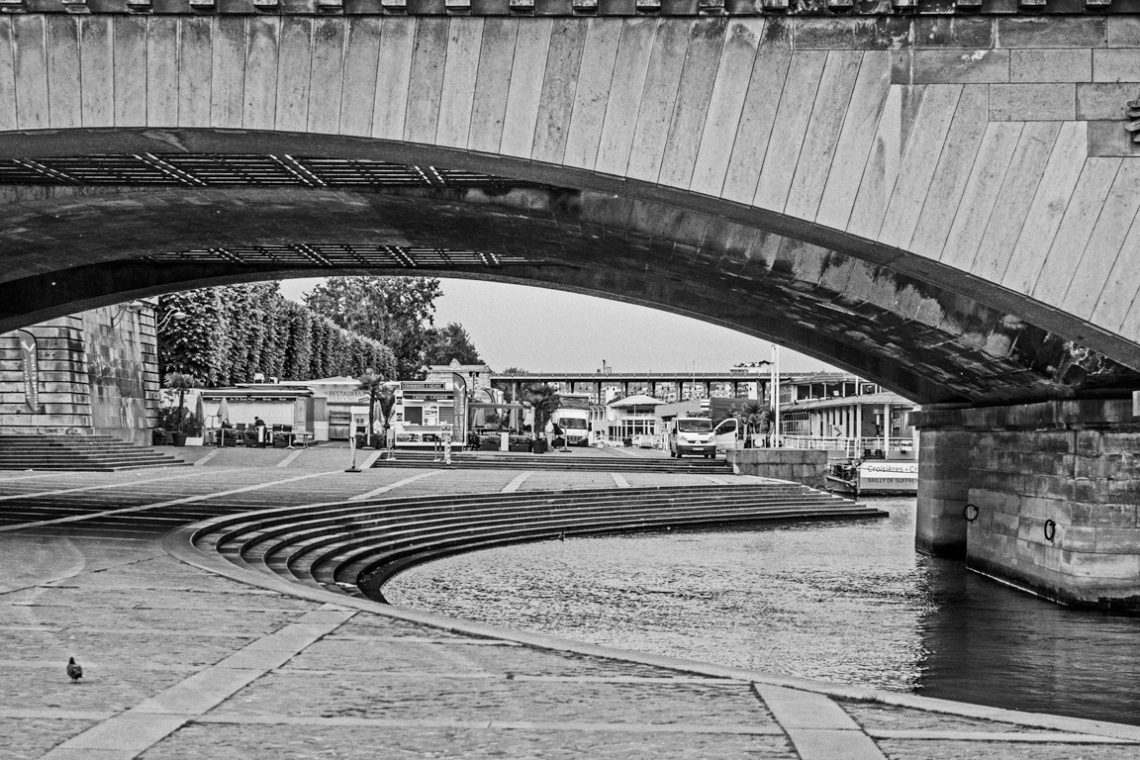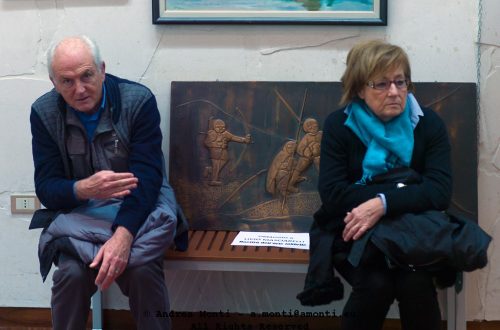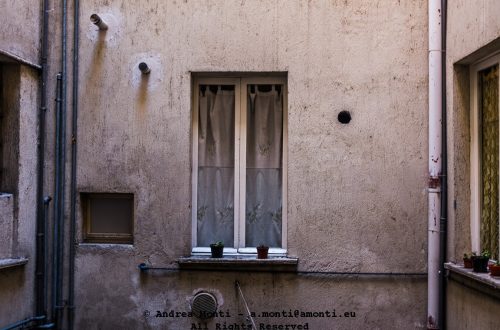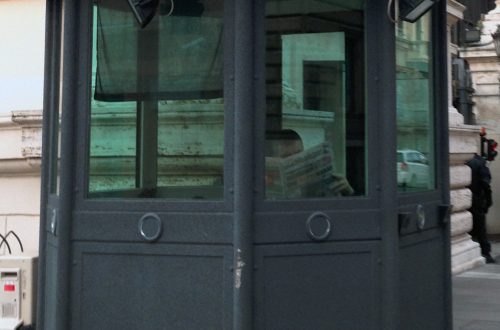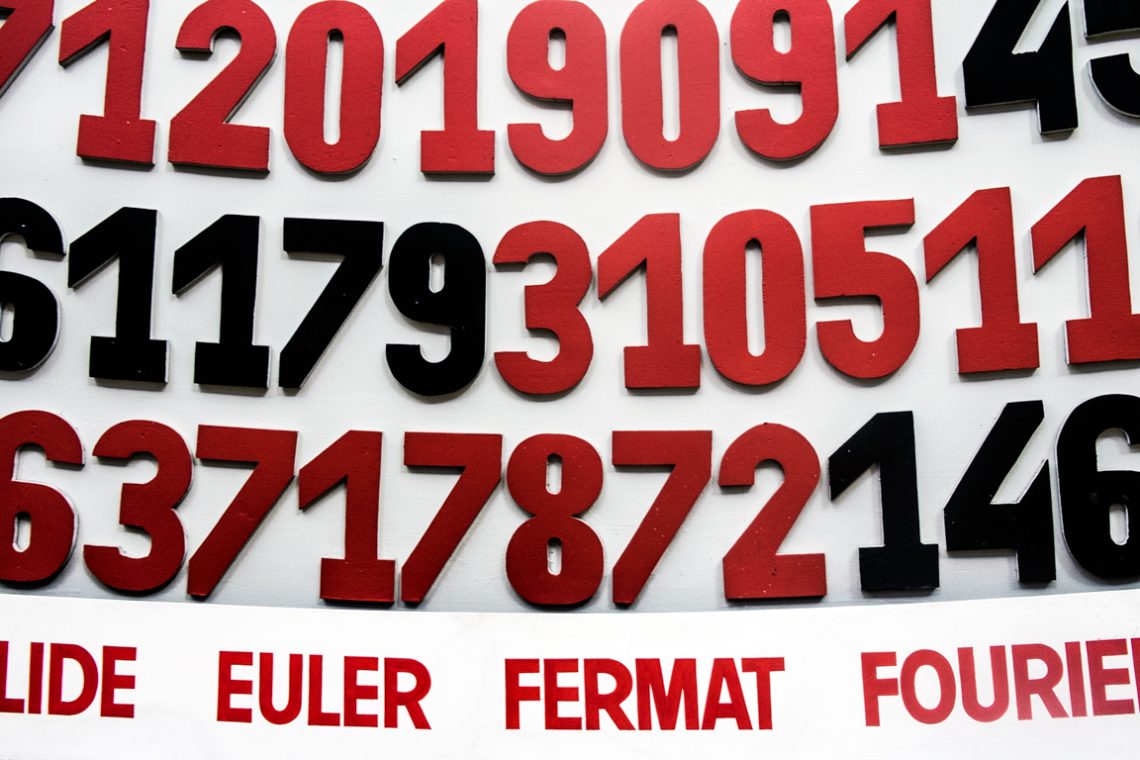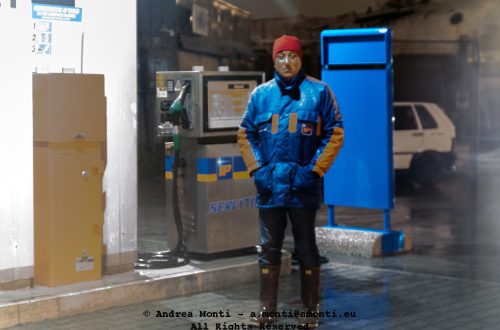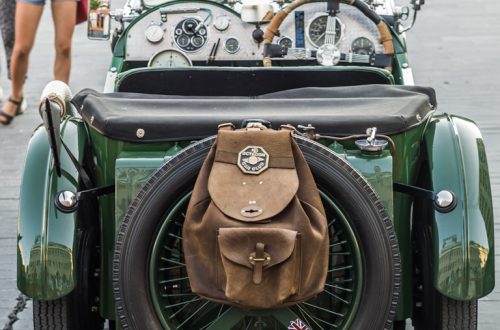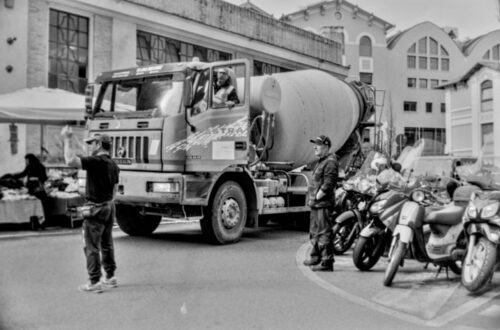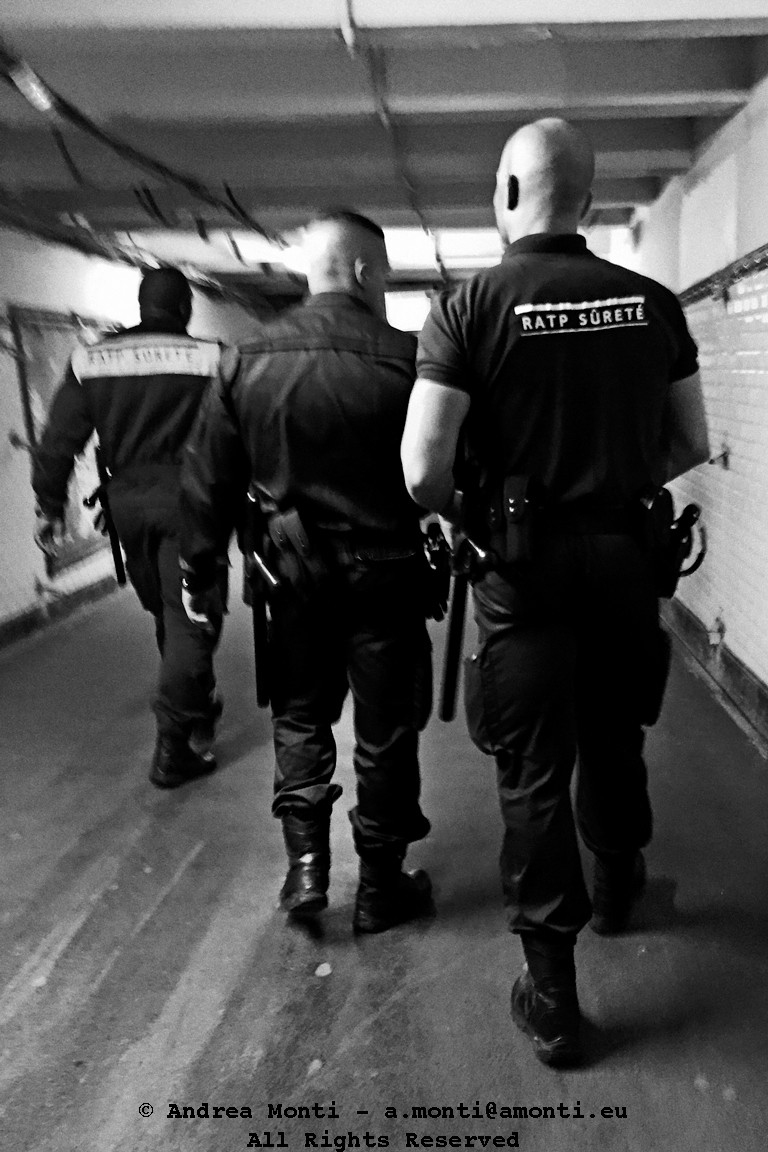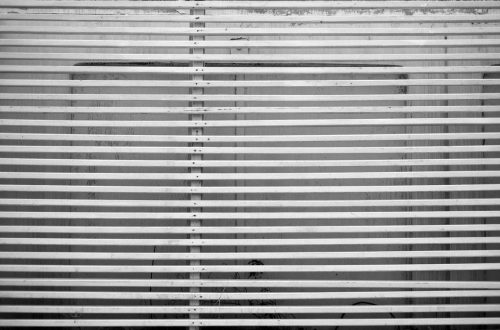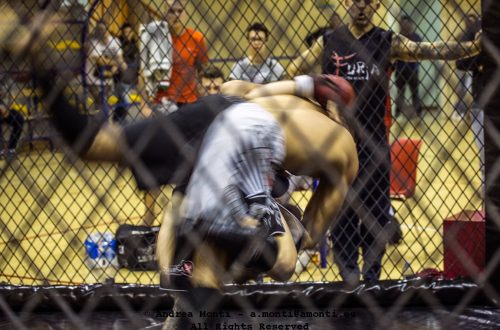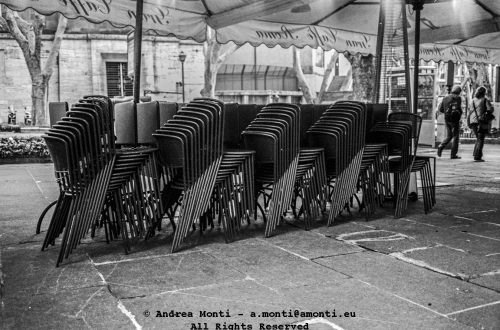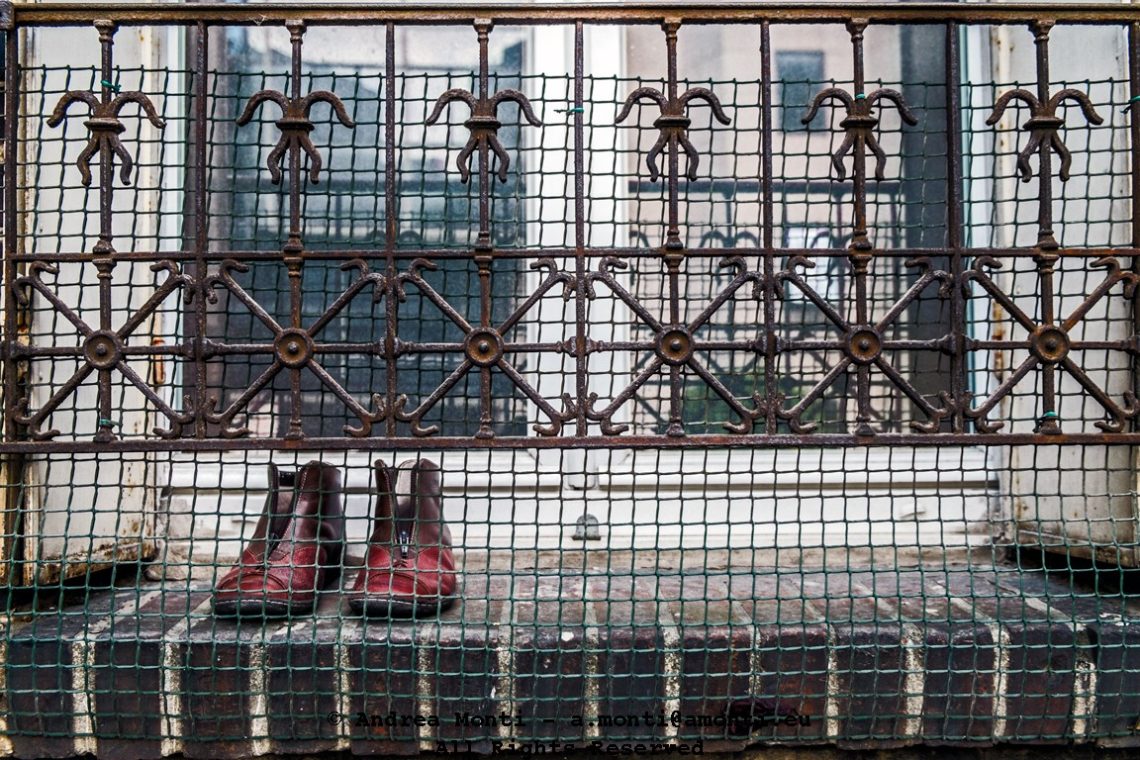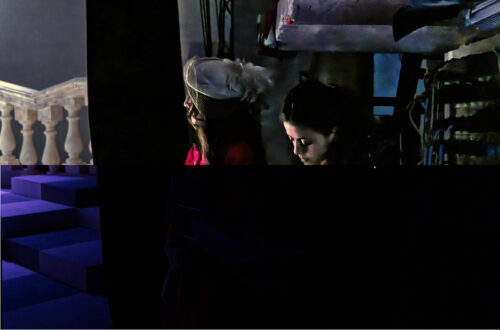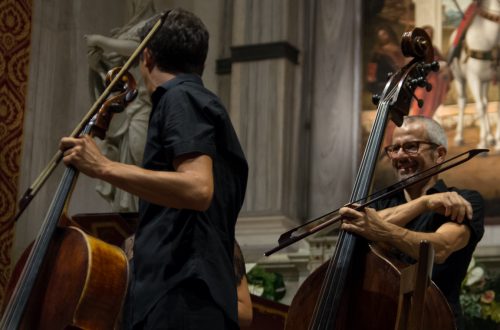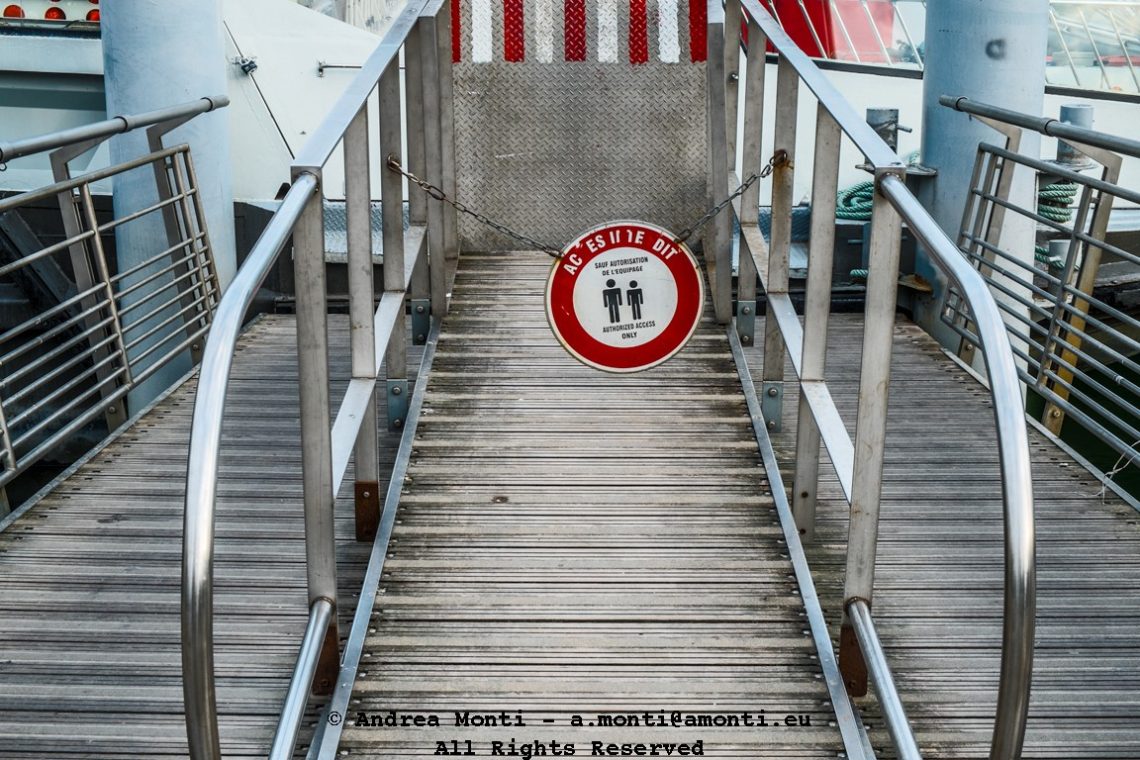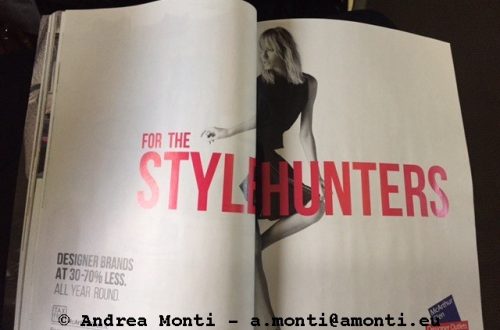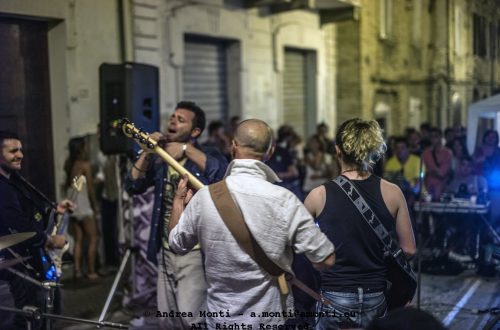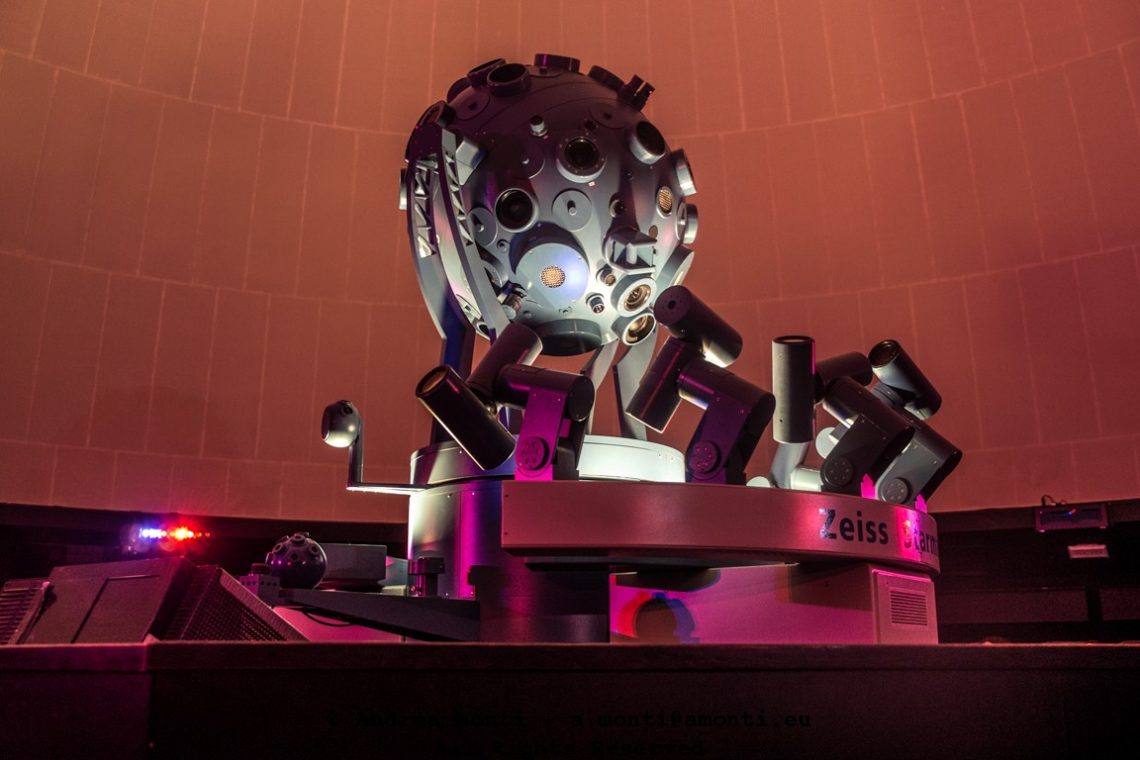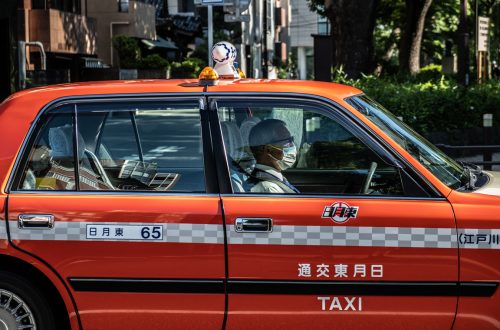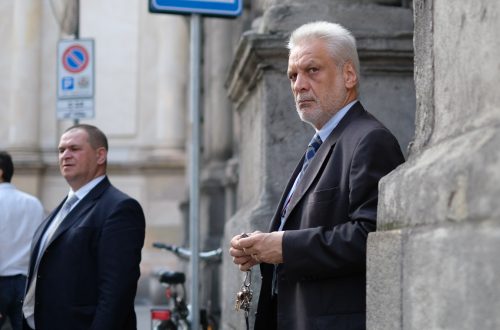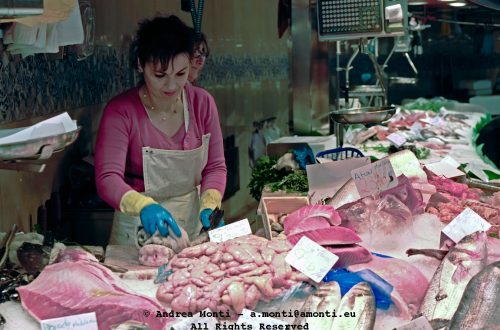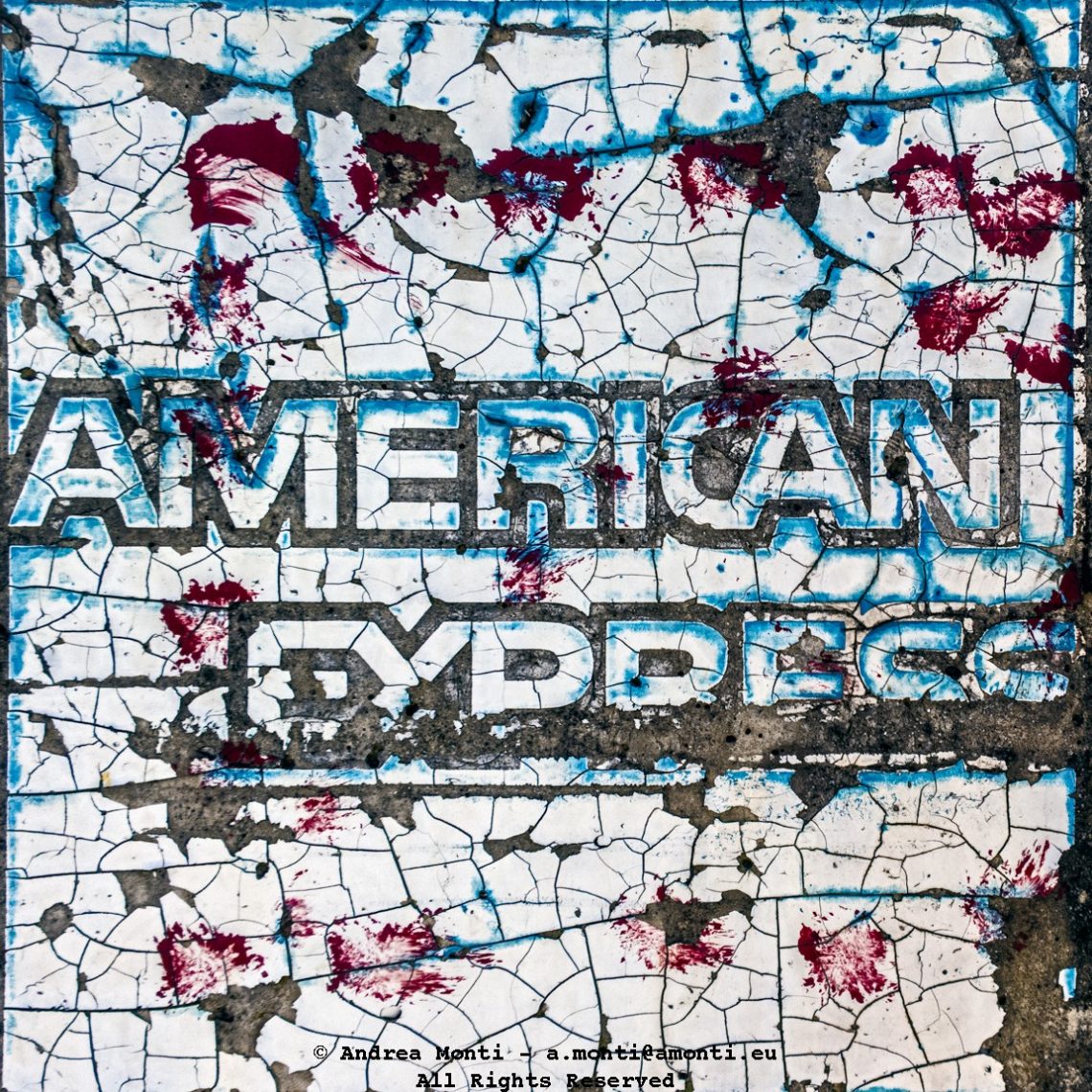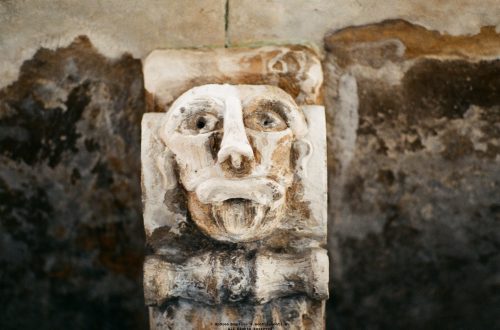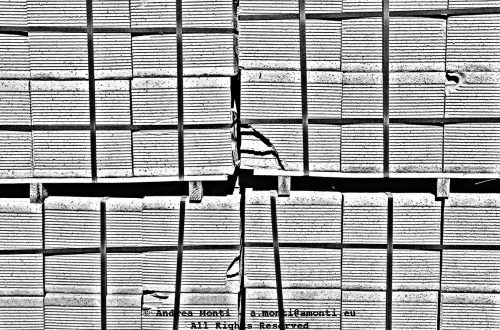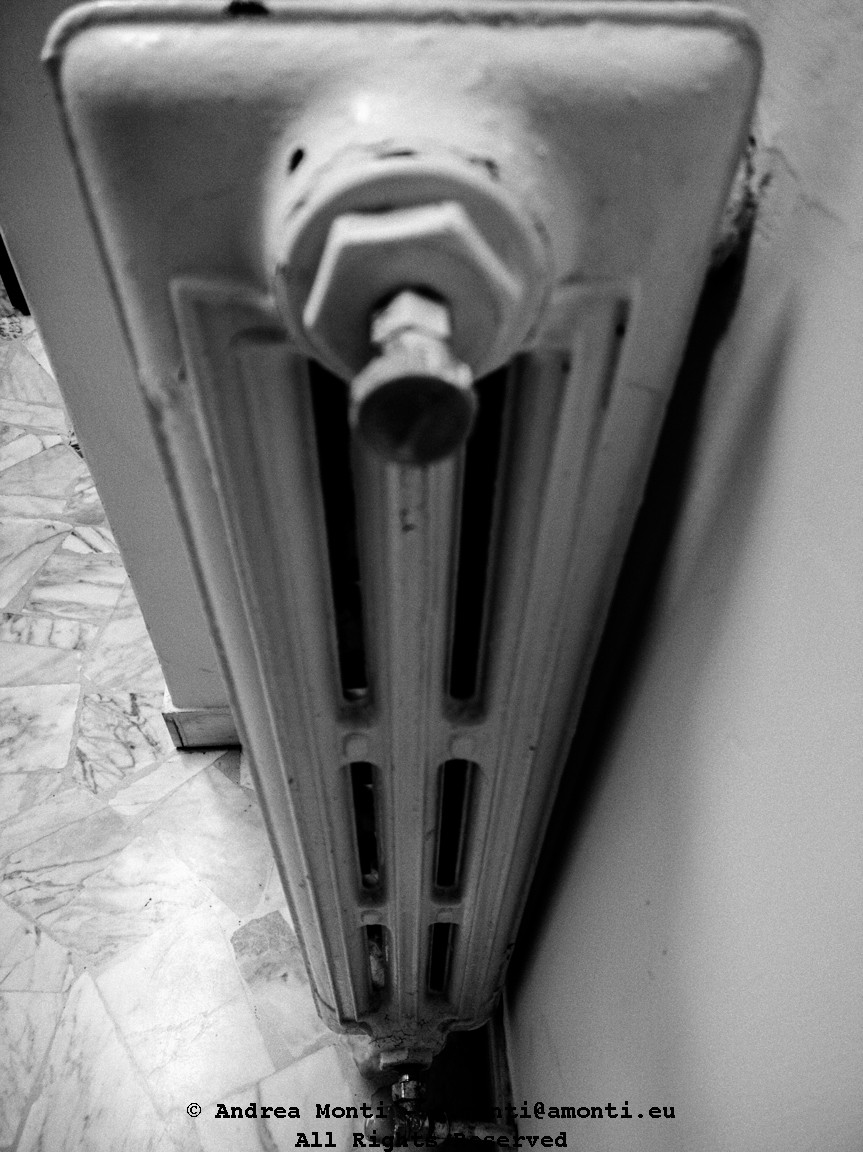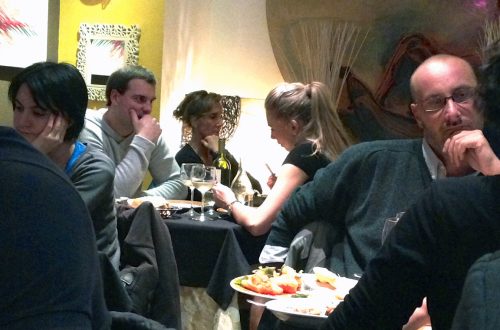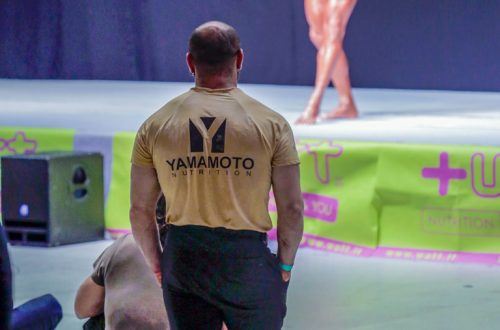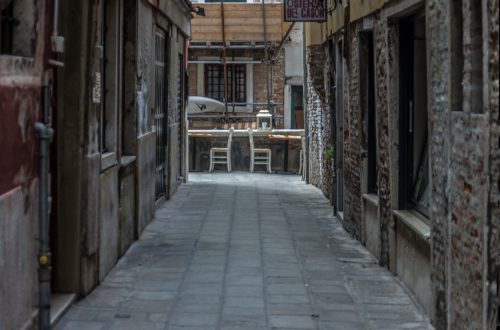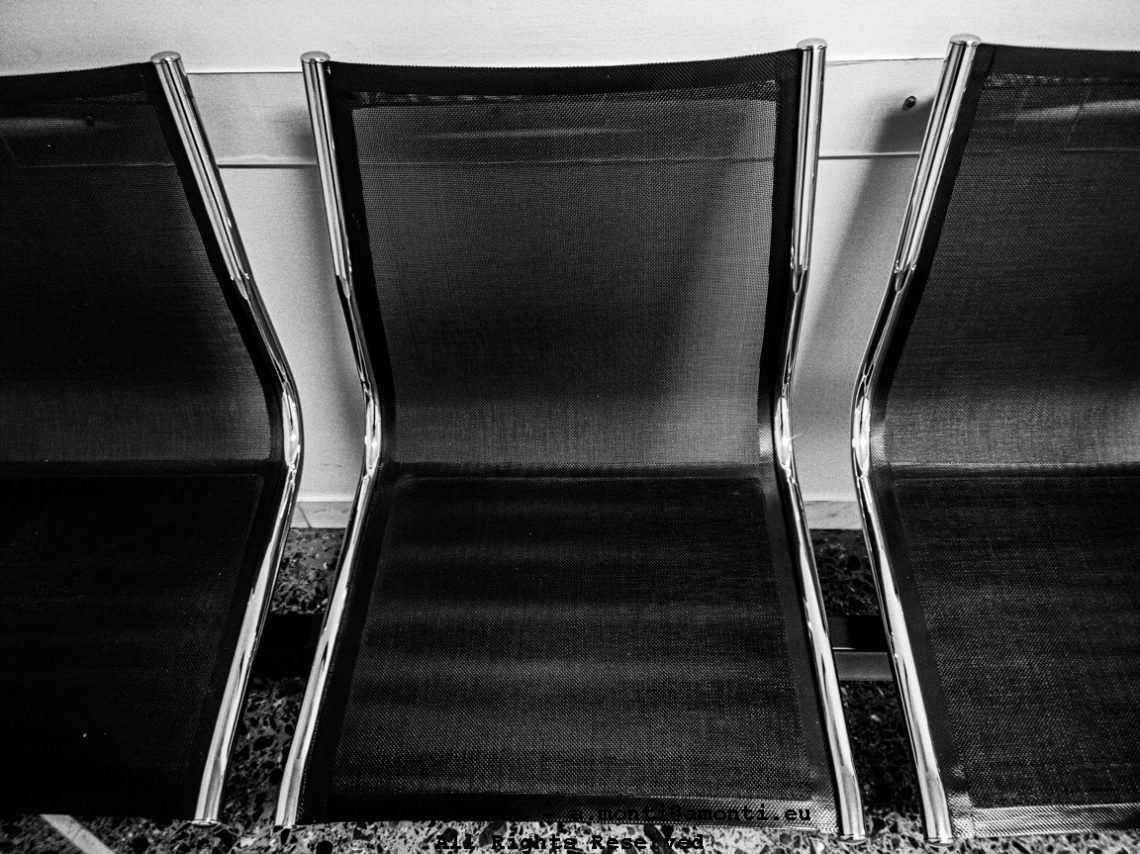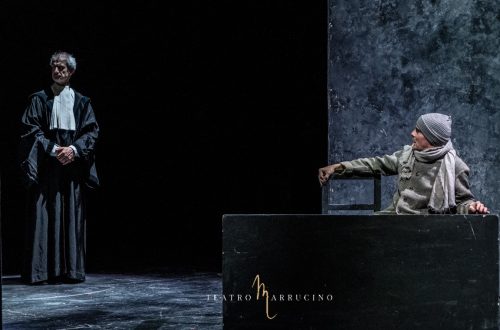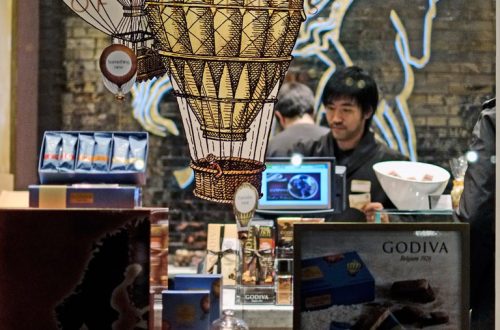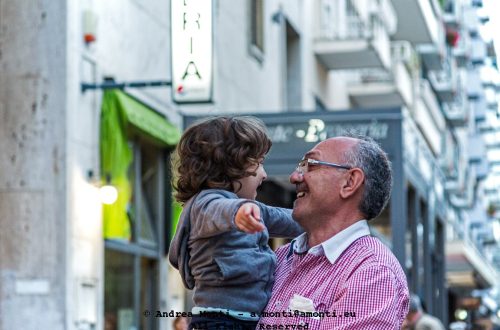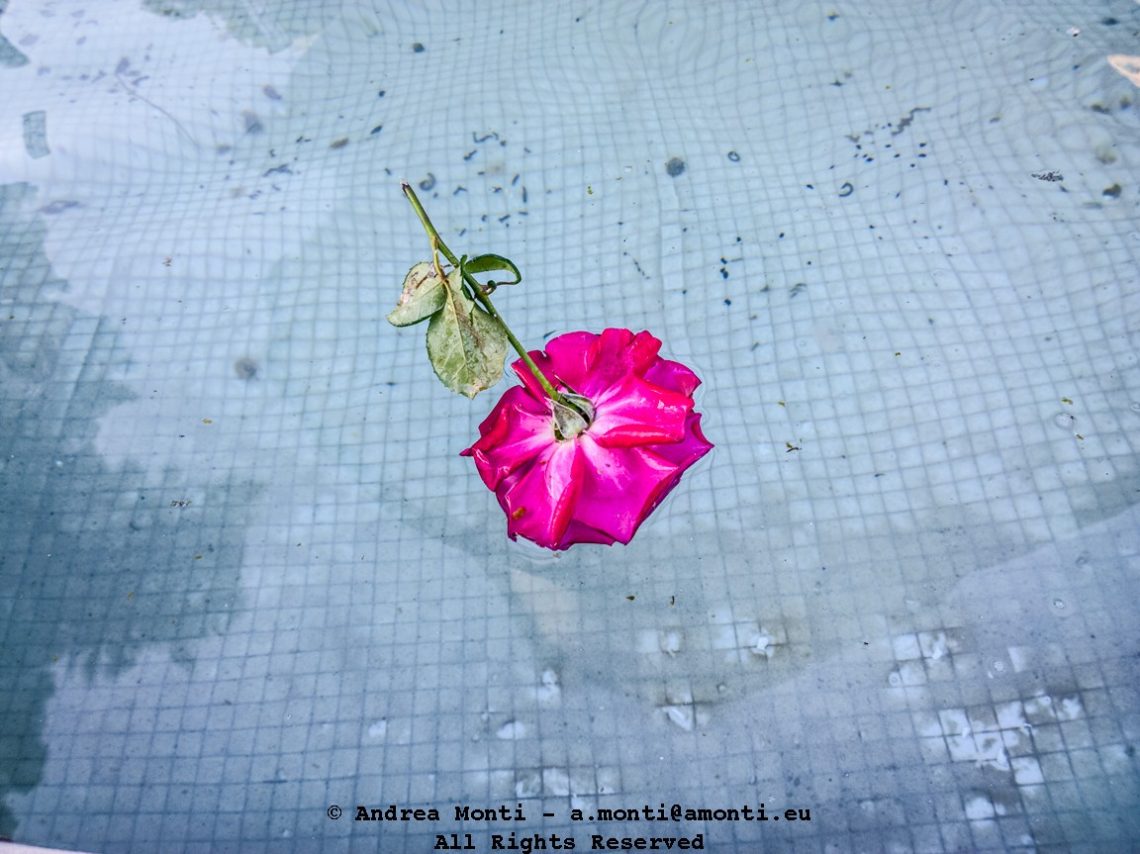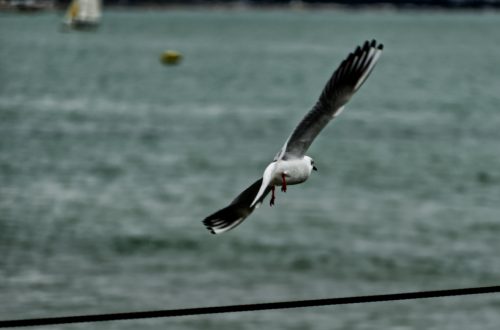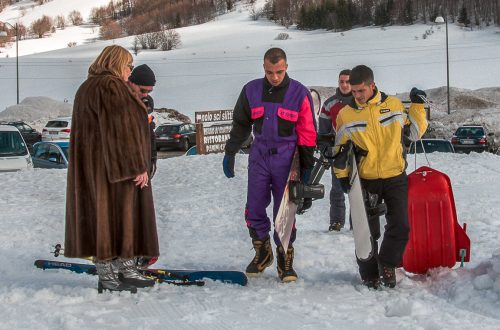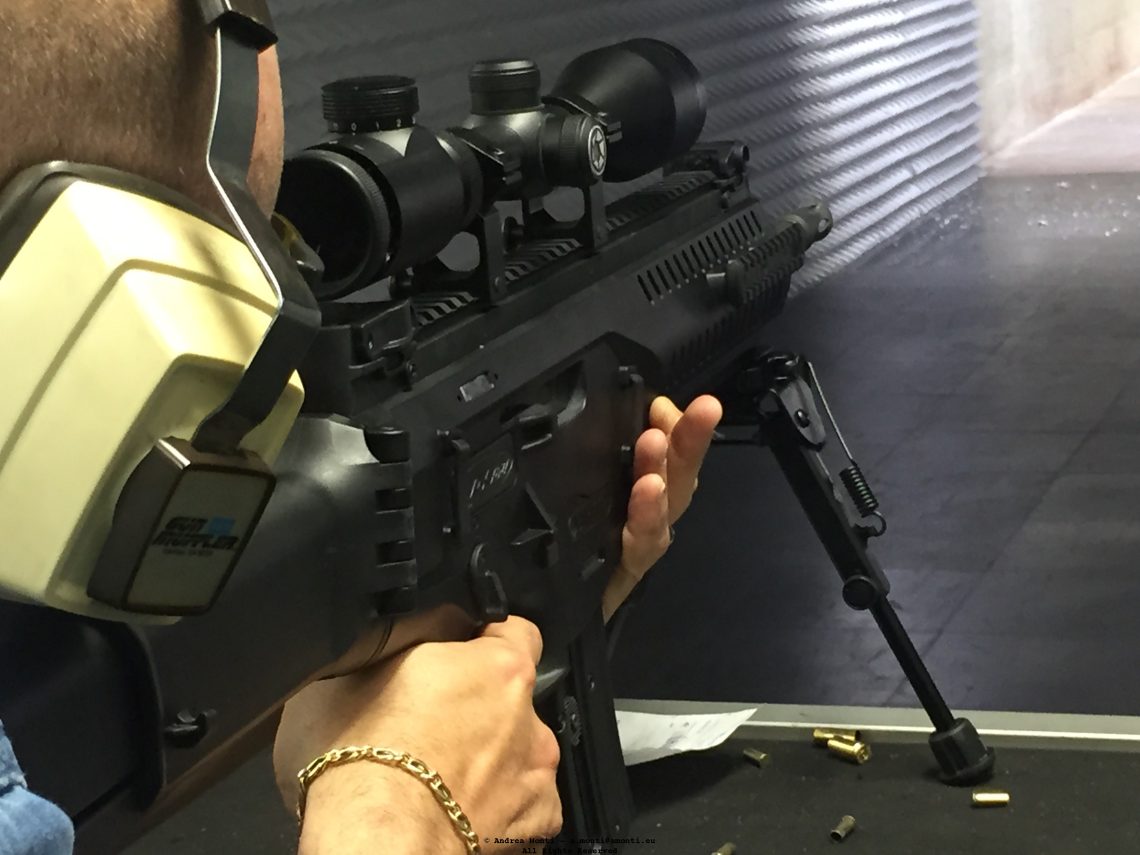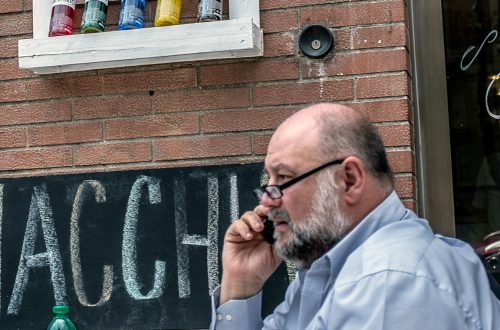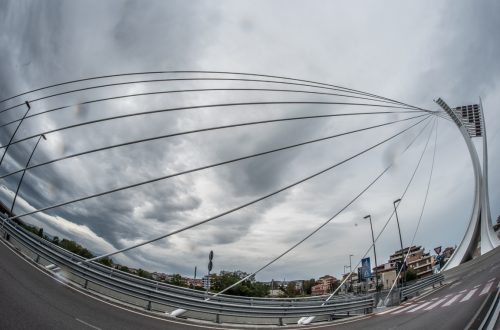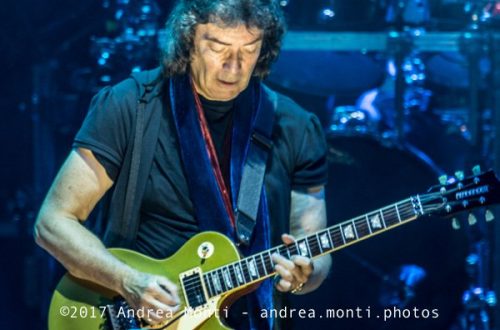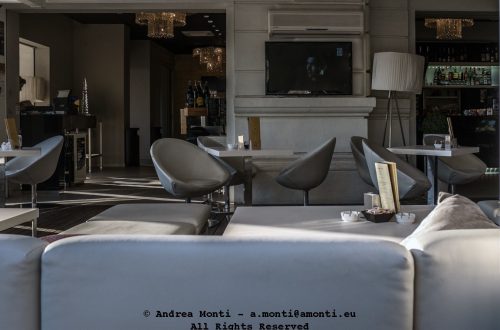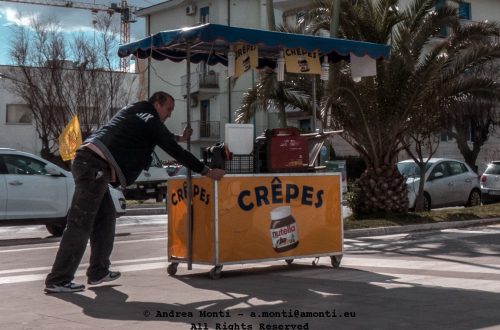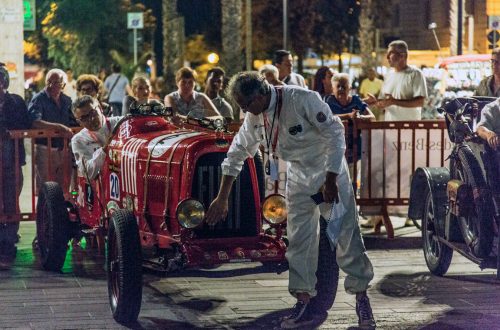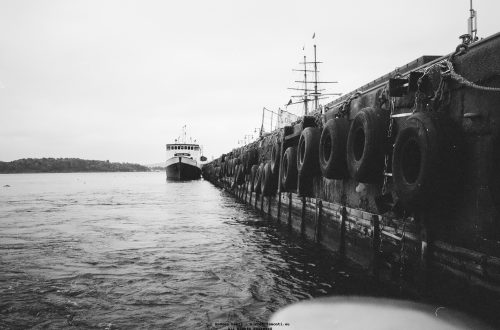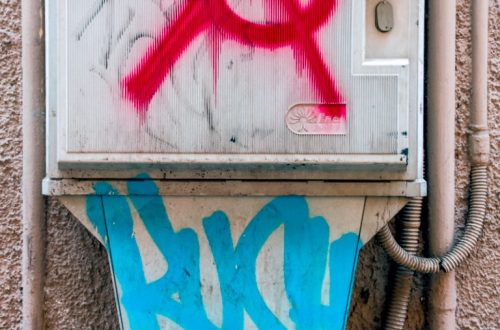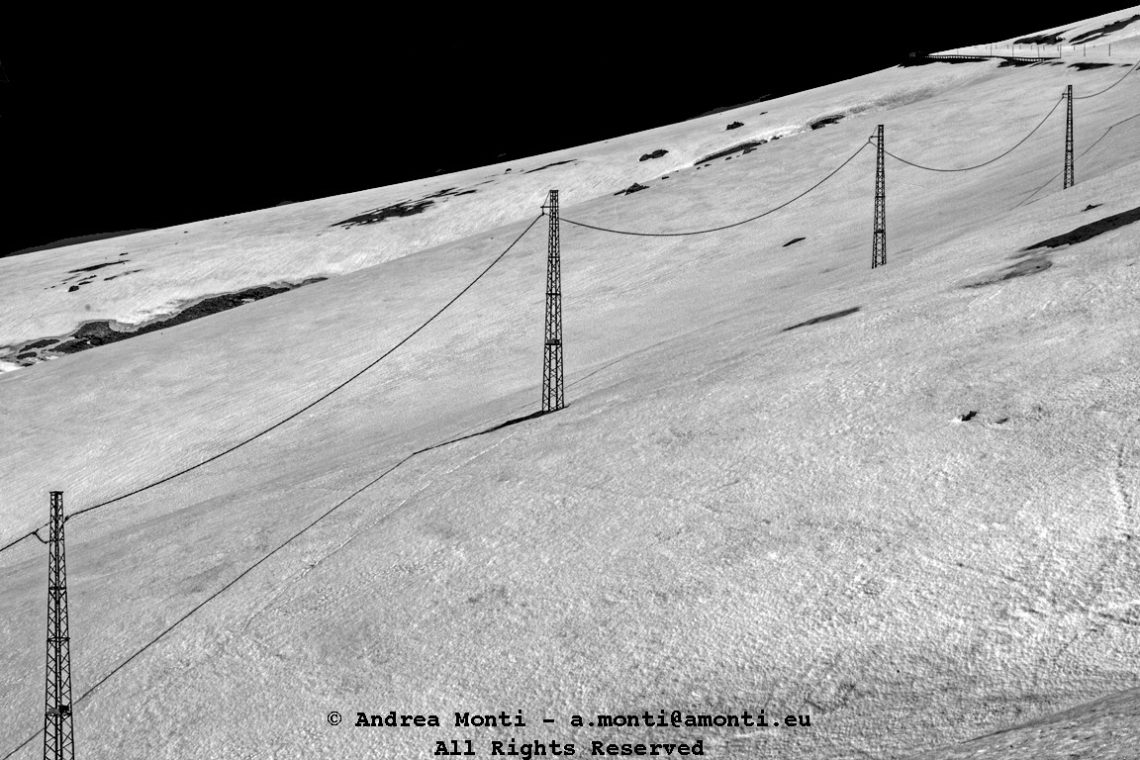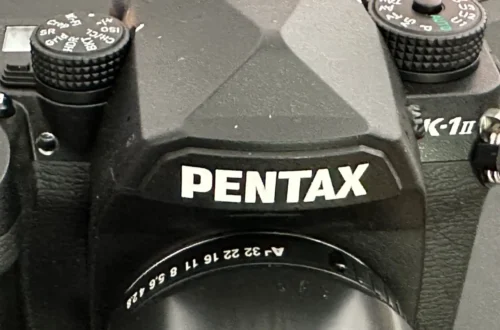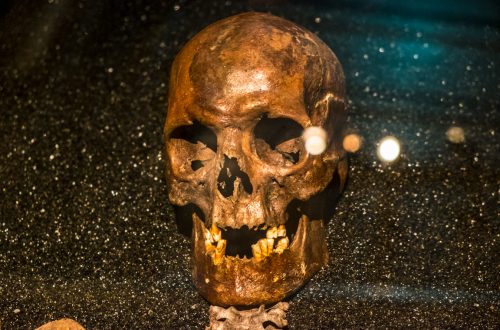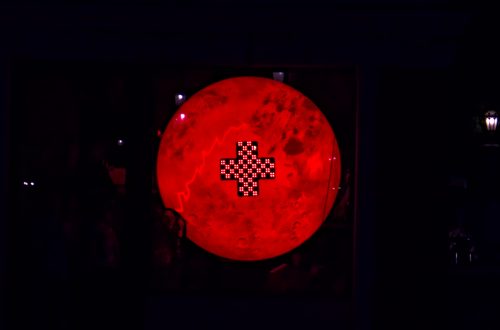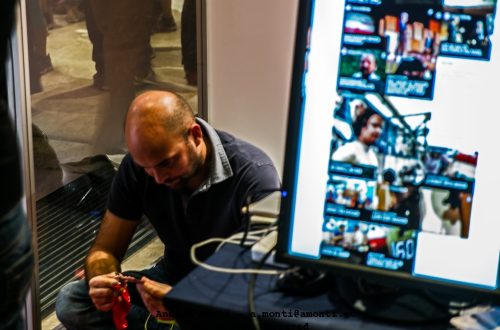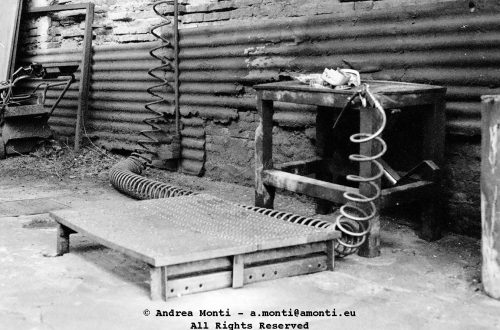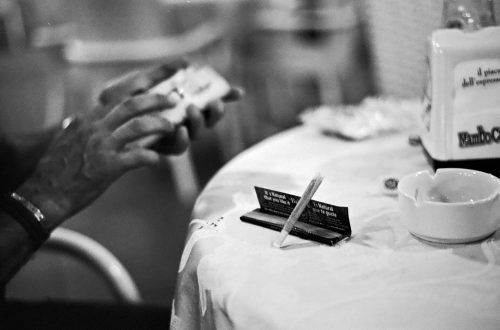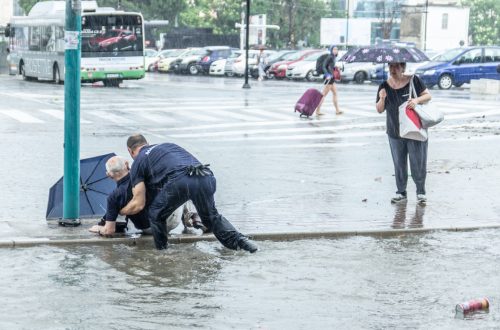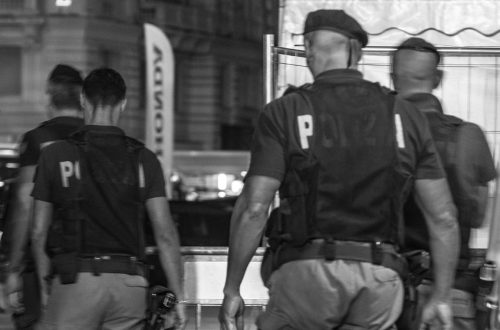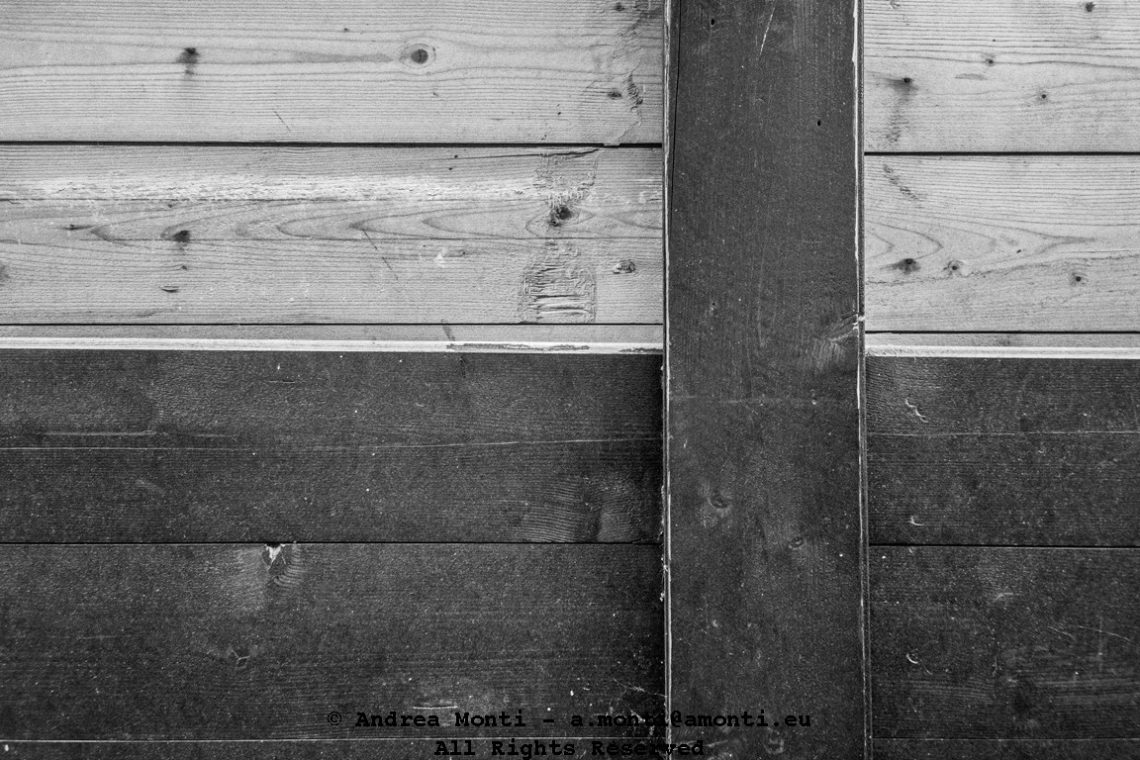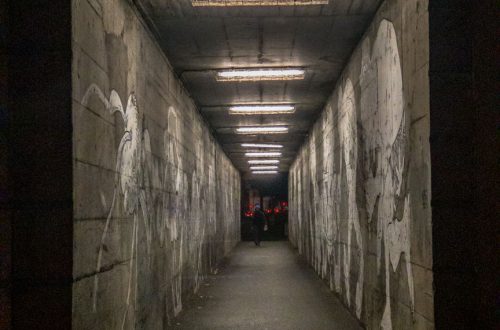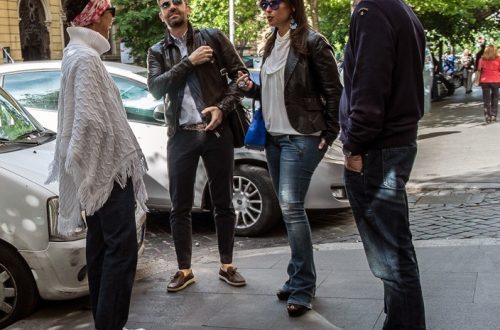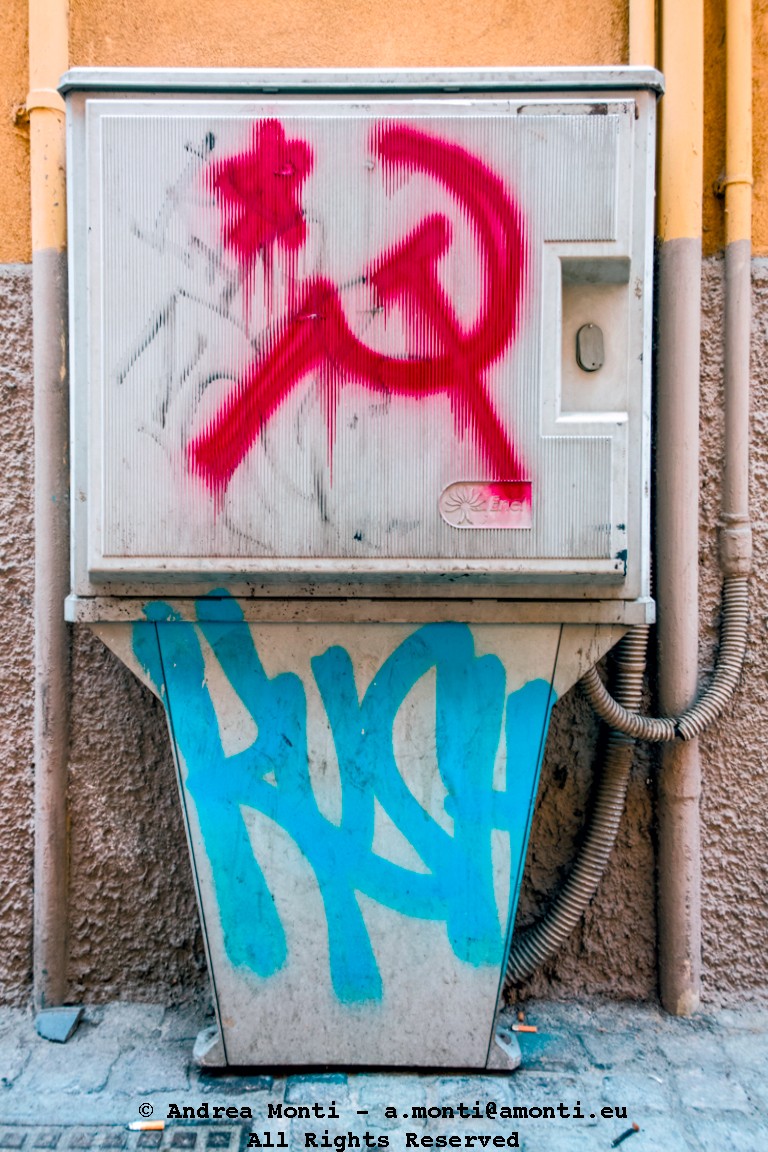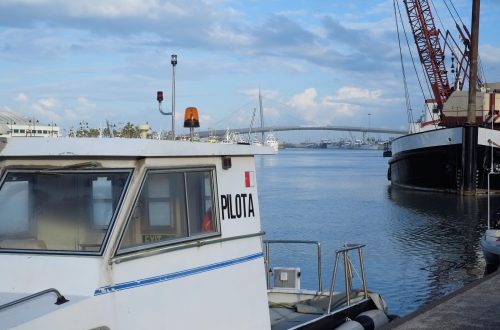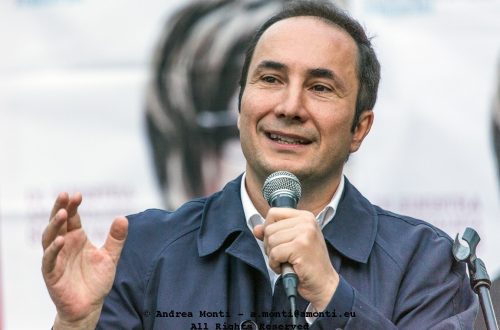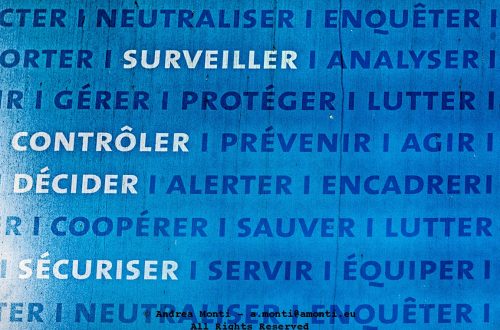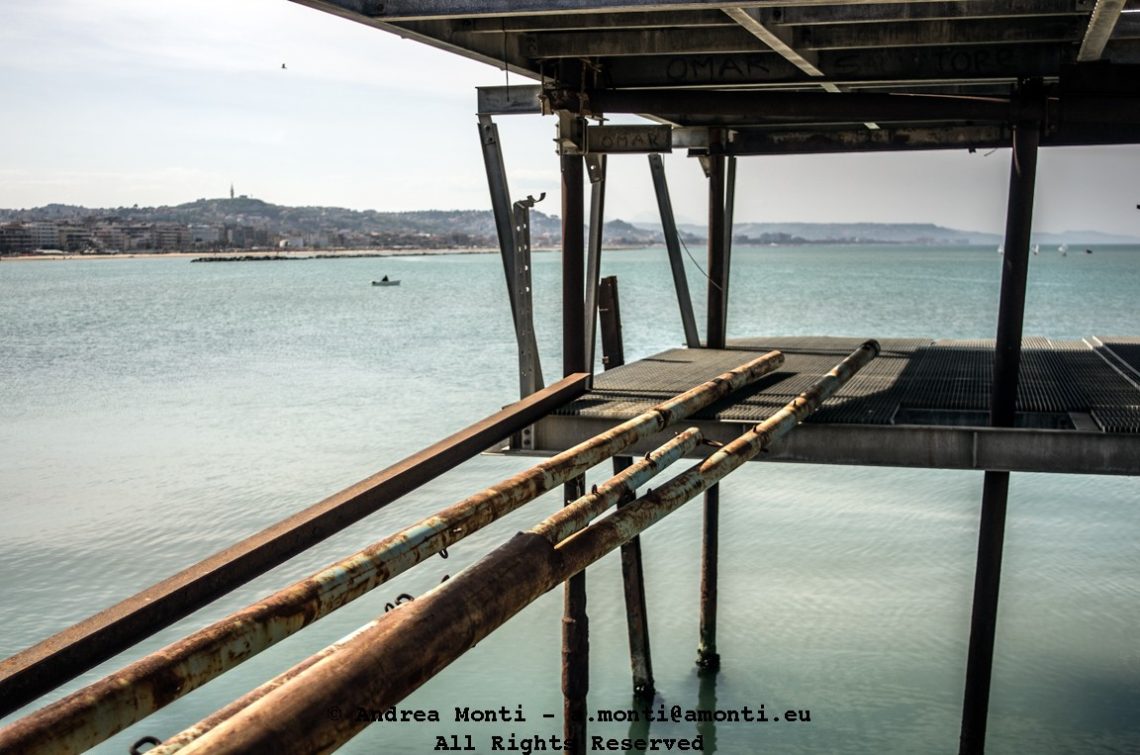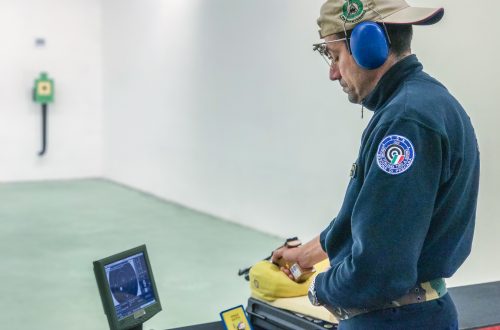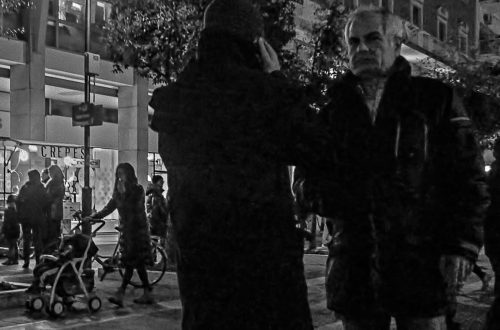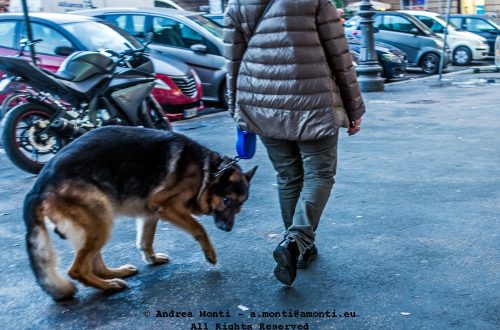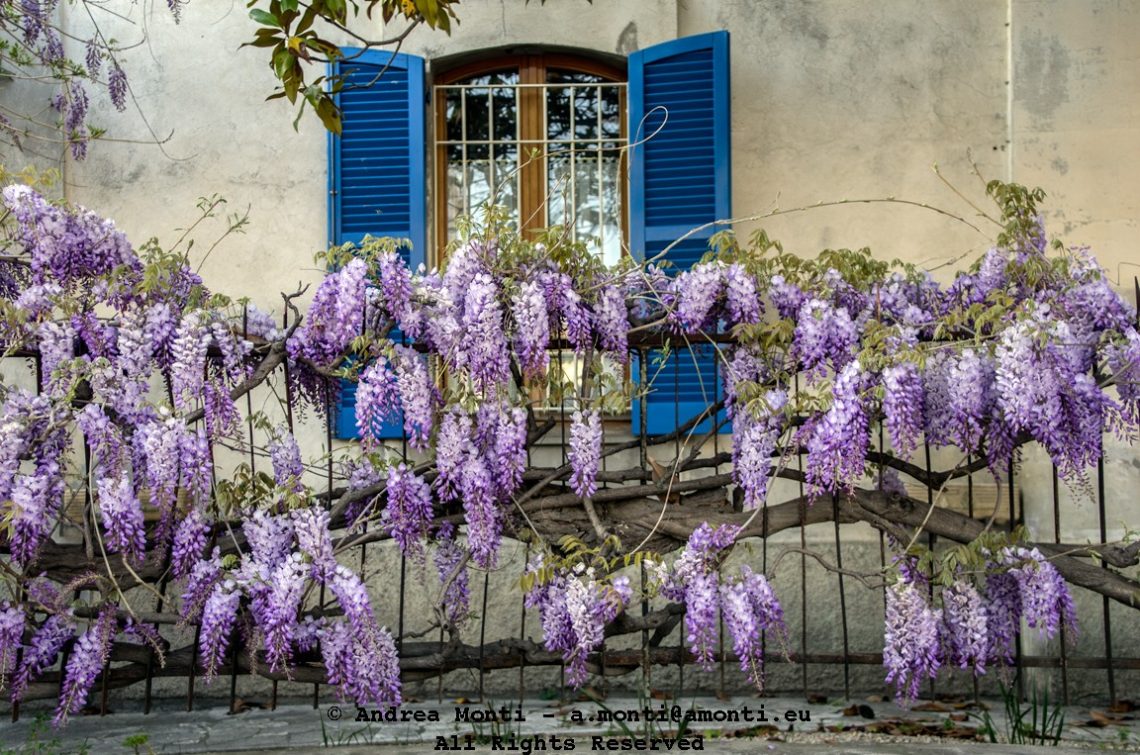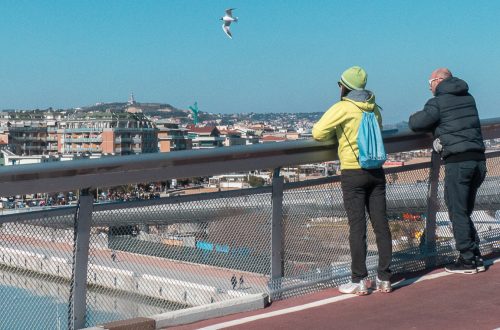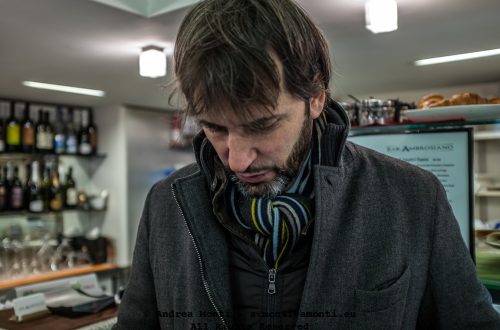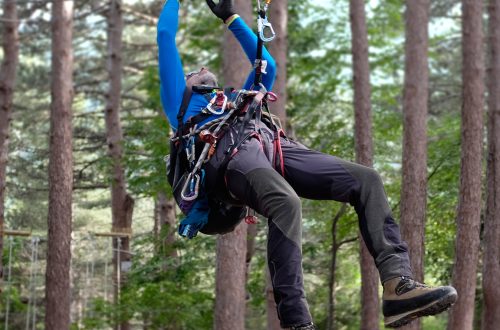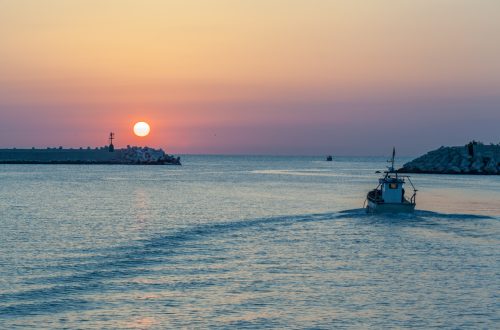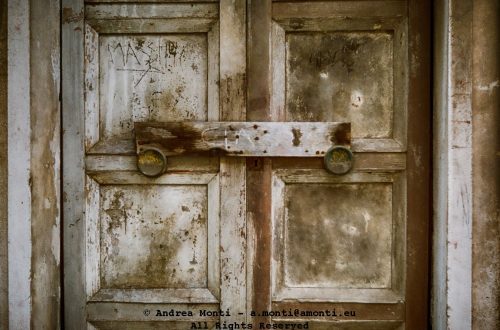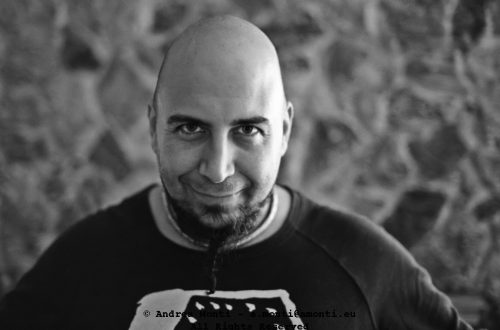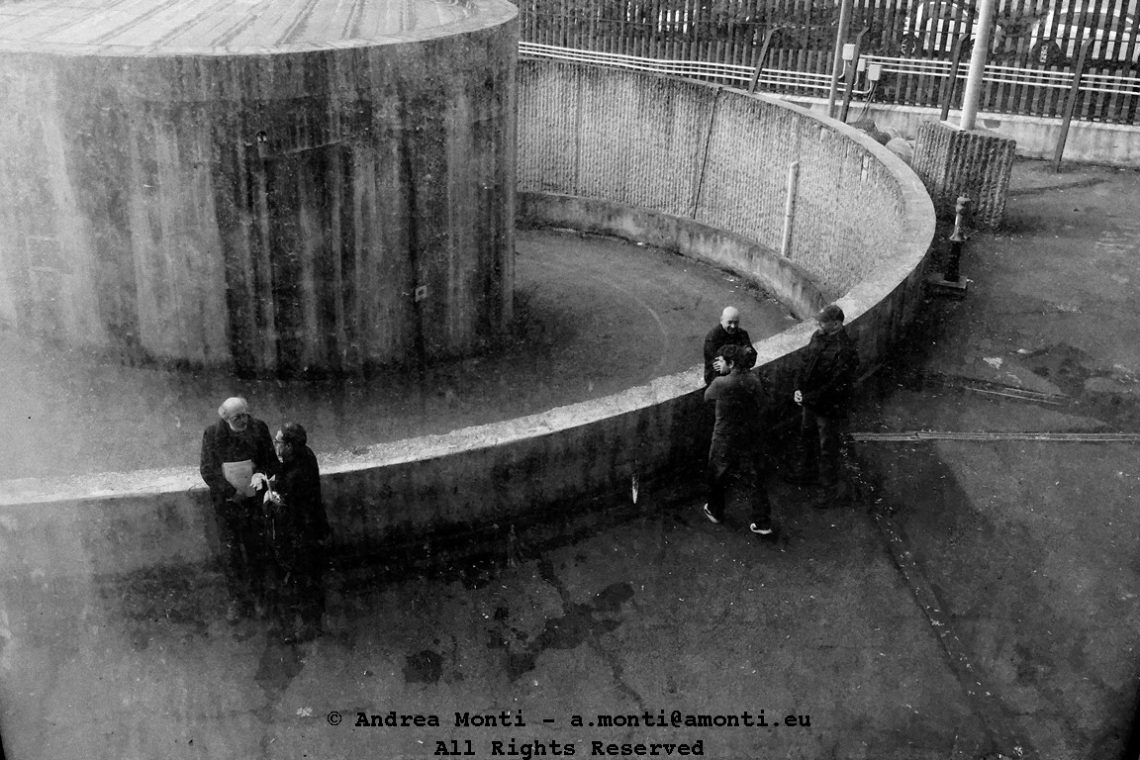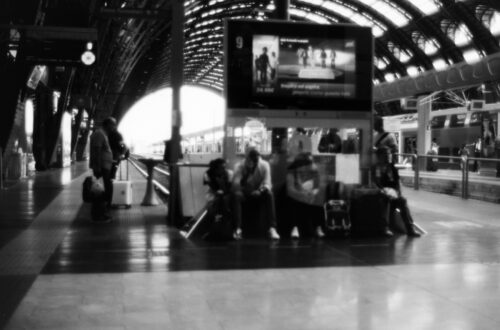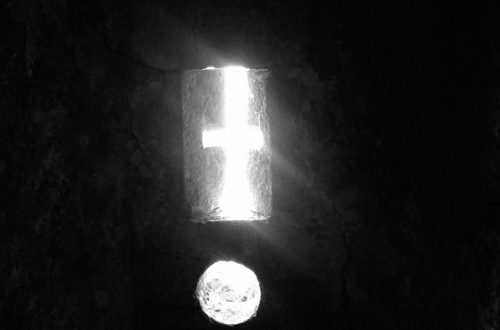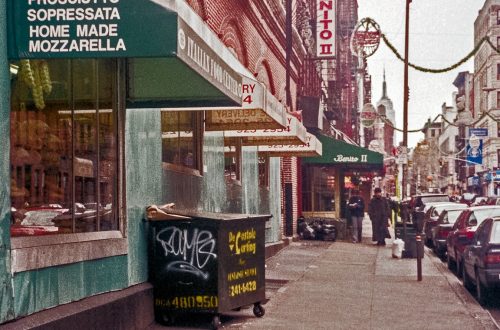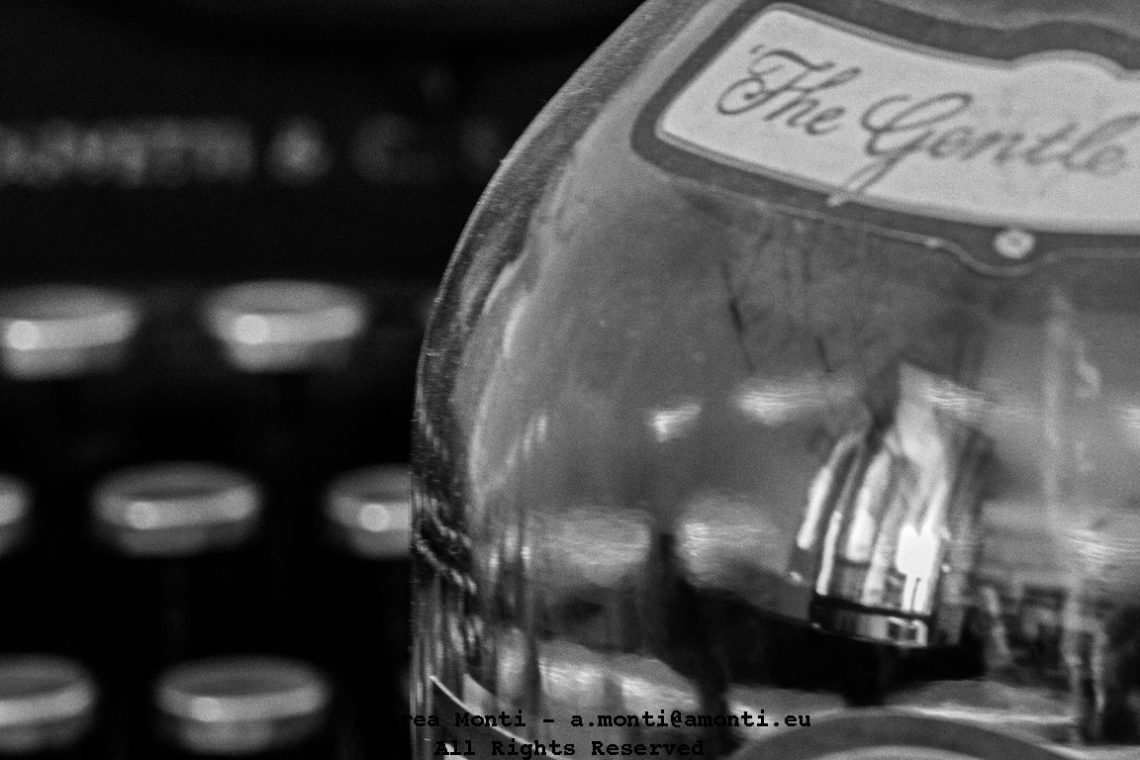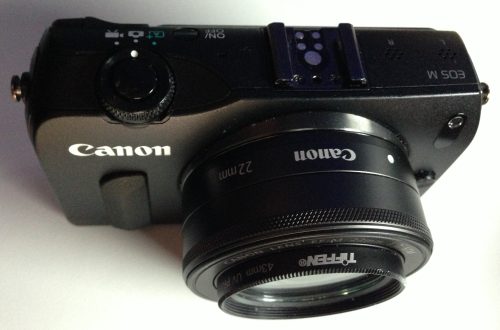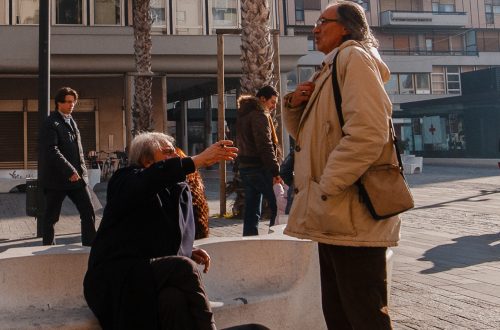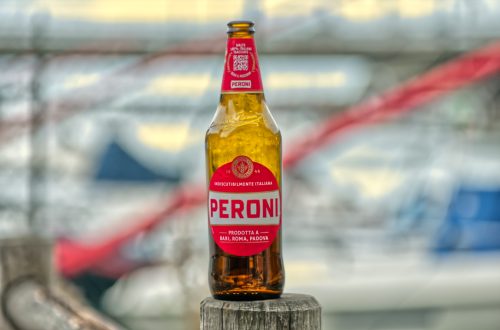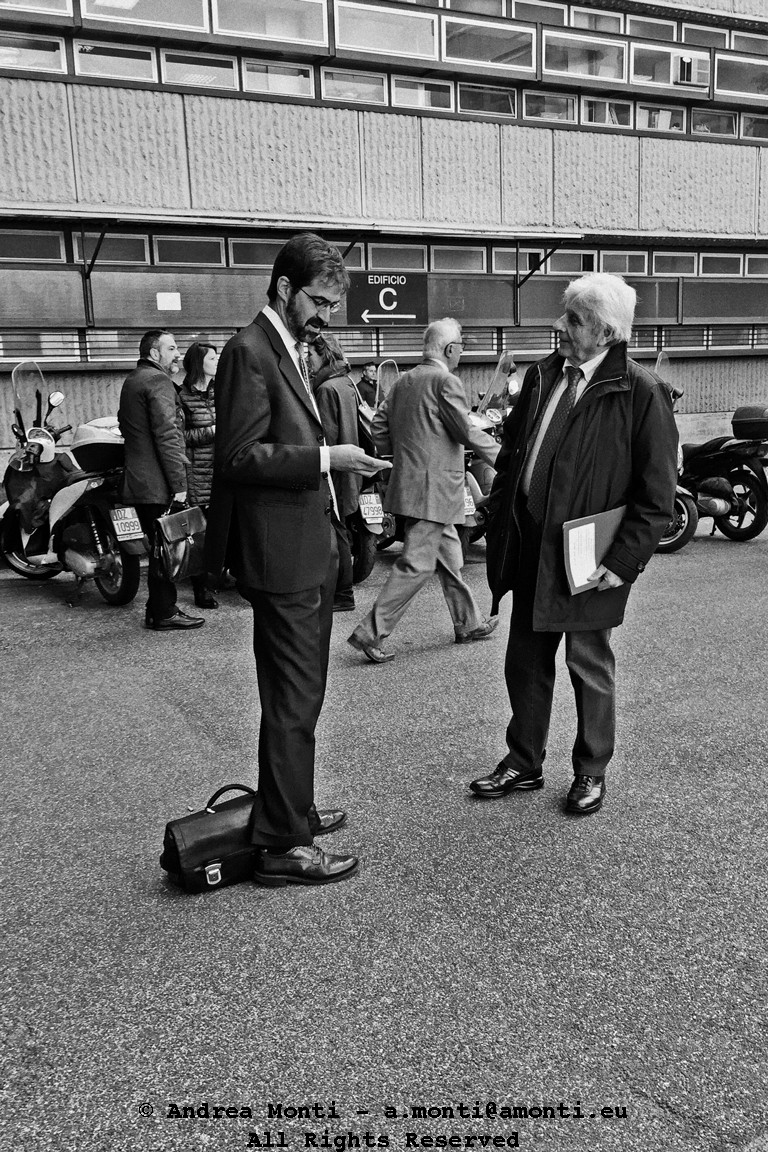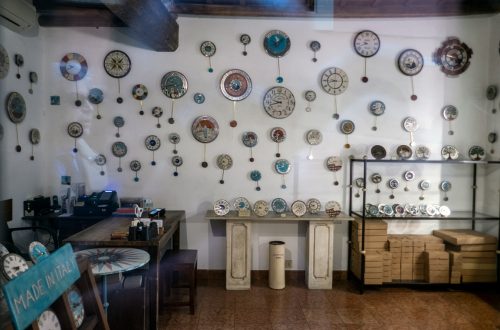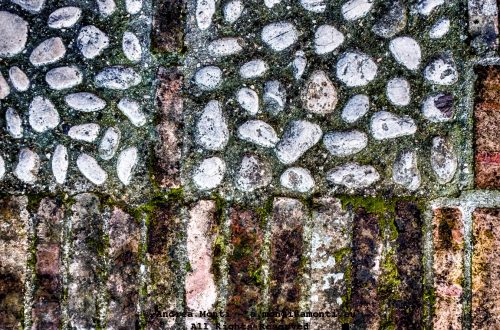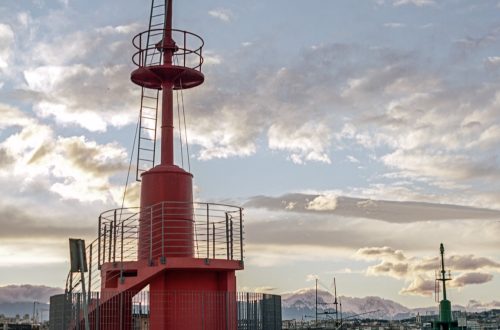-
Under the Arc of the Seine
Paris has a way of revealing its geometry to those who care to look. This photograph, taken from the cobblestone banks of the Seine, uses the underside of a bridge as a natural proscenium arch. The frame it creates is both literal and compositional, guiding the viewer’s gaze toward the urban stage beyond. The sweep of the bridge’s curve is echoed by the concentric stone steps leading down to the water, while the horizontal layers of the background—trees, buildings, roadway—add a pleasing counterbalance to the strong arc. From a technical perspective, the choice of black and white serves the image well. Stripping away colour emphasises the interplay of lines, curves,…
-
PI Room At Palais de la Découverte
Walking into the Palais de la découverte, I was expecting to find science distilled into exhibits, but not quite in the graphic, almost Pop-art punch delivered by this wall installation. Bold, oversized foam digits leap from a sterile white surface, forming the endlessly irrational sequence of π. The visual rhythm is broken strategically with occasional black numerals, pulling the eye into brief moments of disruption. Below the digits, the names — EUCLIDE, EULER, FERMAT, FOURIER — provide a calm intellectual gravity against the visual chaos above. This shot was as much about the tension between mathematics and design as it was about light and form. I framed it head-on to…
-
Underground Security RA(T)P
I took this shot as these three officers from the RATP Sûreté unit passed me in a corridor of the Paris Metro. The framing was pure reflex: centre-weighted, low-angle, fast shutter. I didn’t have time to fine-tune the exposure—the lighting was flat and mixed, with harsh fluorescence above and murky shadows dragging behind. But I didn’t correct much in post either. This is a moment that benefits from its rawness. Their backs tell the whole story. The staggered stride, the swing of a baton, the compressed geometry of the underground corridor—they speak of tension, routine, and latent power. It’s not a confrontational image. The officers aren’t responding to a threat.…
-
Stinky Shoes
I didn’t stage the boots. They were already there — resting, waiting, perhaps forgotten. Red leather, worn smooth at the toes, zipped and upright like sentries. The scene caught my eye not because of the shoes themselves, but because of their place within this cage of repetition: iron grille, mesh netting, and behind it all, the geometry of a city reflected in the glass. The photograph rests on layers. Foreground: a net that seems both to protect and to obscure. Midground: the wrought iron, rusted and ornate, Victorian in its stubborn elegance. Background: the shoes. And beyond them, windows reflecting windows. This multiplicity of frames becomes the structure of the…
-
Access Denied
-
Planetarium
The Zeiss projector at the Palais de la Découverte has an undeniable presence. It is both a piece of scientific equipment and a sculptural object, an embodiment of precision engineering turned into theatre. Under the dome’s dimmed lights, the machine sits like a mechanical deity, ready to conjure the heavens onto the curved canvas above. Photographing it was a matter of honouring its shape without reducing it to a mere technical diagram. I centred the composition to give the machine the stature it deserves, allowing its symmetrical arms and lenses to extend outward in all directions. The warm backdrop of the dome was a natural contrast to the cooler, magenta-tinted…
-
Amex
-
Heater
-
Absence in Three Acts
Empty chairs always speak louder than full ones. These three, bolted to the floor, stare back with a kind of institutional blankness that neither welcomes nor dismisses. They simply are—efficient, expressionless, durable. I wanted to see if the geometry could carry the whole frame, and it does. The repetition, interrupted only by the slight angle of the shot and the unavoidable play of light, creates rhythm without sentiment. Shot in black and white to emphasise the chrome’s edge and the mesh’s subtle gradients, the photograph hinges on texture and symmetry. The lighting is flat, but deliberately so: no shadows, no contrast drama—just presence. These are not chairs meant for rest;…
-
Floating Flower
-
Home on the Range
There’s a moment—right before the shot breaks—when everything else falls away. This frame captures that exact moment. The quiet before the concussion. The balance between intent and mechanics. Taken in a professional range under full control, it documents not violence, but discipline. Focus. Precision. The brass tells its own story: just-fired casings scattered like punctuation marks on the shooter’s rhythm. The rifle rests steady on a bipod—cold, functional, ready. The shooter’s hand is not tense, but deliberate. His chain bracelet glints faintly in the sterile light, an unexpected human contrast to the black polymer and steel. This isn’t combat. It’s not theatre. It’s a place where performance meets protocol. Where…
-
And Justice For All
This shot came together in complete silence — the kind of silence that only certain institutional buildings can generate. The kind made of marble, fluorescent light, and tension. I didn’t stage a thing; the geometry was already waiting for me. One man in the foreground, half-shielded by a paper, lines converging to a trio sitting far in the distance — it all felt like a scene rehearsed for a stage I just happened to walk onto. Compositionally, this image relies heavily on symmetry and recession. The central aisle, vanishing neatly into the background, draws the eye from the bold human presence up front to the barely-noticed figures in the rear…
-
Desolation
I remember standing at the entrance of this narrow underpass, camera in hand, struck by the oppressive stillness. The word “desolation” seemed to settle in my mind even before I pressed the shutter. There was no movement, no sign of life, only the faint echo of my own footsteps on the tiles. The composition is built on geometry and confinement. The corridor acts like a visual funnel, guiding the eye towards the back courtyard and the blank, closed garage doors. The graffiti scrawled on both walls interrupts the symmetry just enough to add texture and a hint of human presence — though not the kind that enlivens a space. The…
-
Lunar Network Or Snowy Mountain?
This image was made at high altitude, but it could have been taken on the Moon. That’s what initially drew my eye: the surreal minimalism of these snow-covered slopes interrupted by a line of utility poles, stretched tight against the vast emptiness. The illusion of a lunar landscape is heightened by the total absence of sky detail—pure black, a void—and the almost abstract texture of the snow, exaggerated by strong directional sunlight. The decision to shoot in black and white came naturally. Colour would have been a distraction from the harsh geometry, from the juxtaposition of natural emptiness and imposed structure. Each pole, evenly spaced, is both part of a…
-
Trespassed
-
Pipes in Colour
I photographed this section of wall for its unexpected interplay between infrastructure and colour. The rusted pipe, running vertically through the frame, is not remarkable in itself, yet in combination with the graffiti and stains, it becomes part of an improvised composition. The red spray paint, the rough blue marks, and the muted grey stone surface transform a functional corner of the street into an abstract tableau. The framing was deliberate: I aligned the pipe with the vertical axis to divide the picture almost in two, while allowing the barred window to creep in at the bottom left. That small intrusion anchors the image, reminding the viewer that this is…
-
Stripes in B&W
-
Hammer and Sickle
The image presents a straightforward urban fragment: an electrical cabinet bearing two layers of graffiti, one in red, one in blue. The red, unmistakably, forms the hammer and sickle symbol — sprayed quickly, with visible vertical striations from the cabinet’s ridged surface disrupting its edges. The blue tag below is broader, more gestural, perhaps made with a thicker nozzle and without concern for the political overtones of what sits above it. Compositionally, the vertical framing suits the subject, containing the entire cabinet and the immediate environment. The flanking pipes and textured wall create a symmetrical boundary, keeping the viewer’s focus on the graffiti itself. The alignment is square and deliberate,…
-
Rusted Platform
-
Springtime
-
Trial Docks Waiting for the Justice to Come
-
Final Arrangements Before the Hearing
-
Writer Inspiration’s Tools
-
Outside the Courthall
